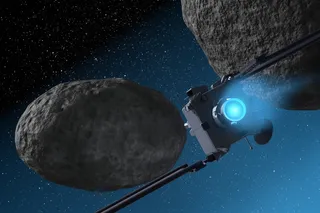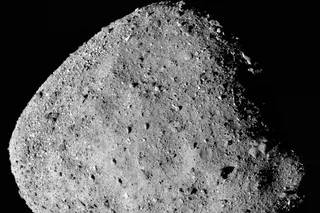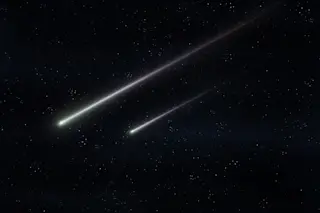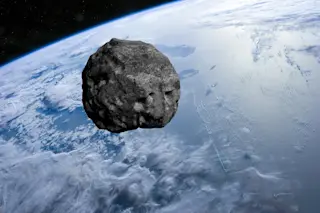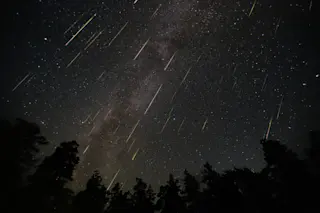Mars missions should probably come with the kind of warning label you'd find on a cigarette pack: "May cause cancer and blindness." If you were traveling to Mars solely by spacecraft, your health might take a serious hit during the 18-month or so round-trip journey--and you might not even be able to see your home by the time you got back. Throughout the journey, high-energy particles known as cosmic rays would course through your body, not only damaging your eyesight, but also increasing your risk of cancer by up to 20 percent. Luckily, one scientist has an answer: Don't fly a spaceship to Mars, hop on an asteroid instead. Cosmic rays zing into our solar system from interstellar space; here on Earth our planet's magnetic field protects us from them, and astronauts aboard the International Space Station are mostly protected by the Earth's bulk and its magnetic field as well. ...
To Hitch a Ride to Mars, Just Flag Down an Asteroid
Mars missions face severe health risks; cosmic rays could increase cancer risk by 20%. Discover innovative shielding methods.
More on Discover
Stay Curious
SubscribeTo The Magazine
Save up to 40% off the cover price when you subscribe to Discover magazine.
Subscribe

